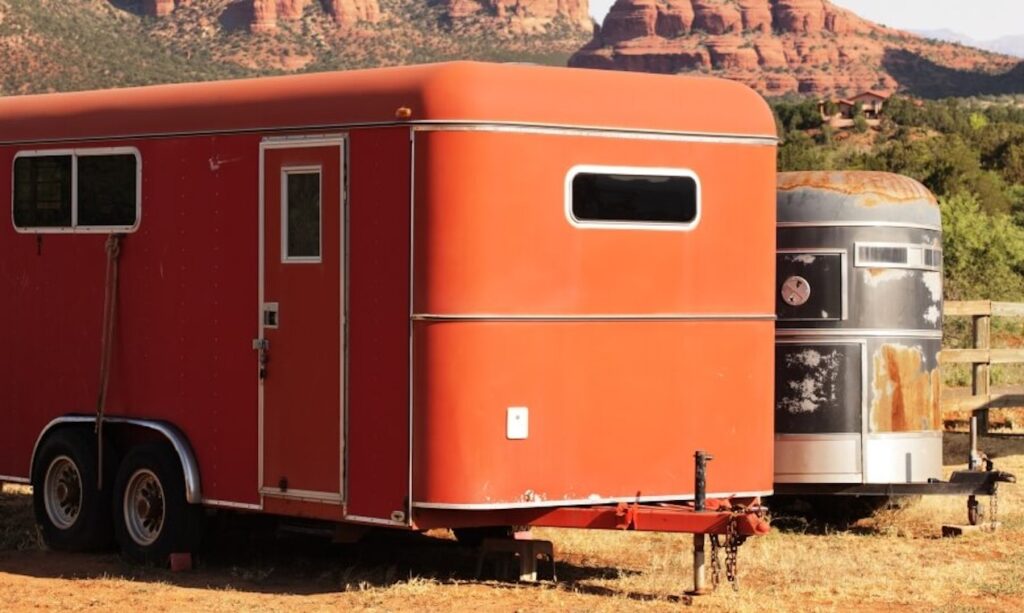In today’s get-up-and-go world, mobility has become a higher priority. Technology has allowed people to decentralize, drifting away from the office or their homes and becoming more flexible in their living situations.
In the past few years, many have started to live on the road in campers and makeshift trailers. Survivalists may want to make life more comfortable by converting an ordinary trailer into a mobile base camp. Here’s how to do it.
1. Find a Trailer
The first step in building a mobile base is to find a trailer. Many survivalists convert their existing ones because the starting infrastructure is already there. It requires manual labor but is often cheaper than buying a new trailer. An enclosed cargo trailer is ideal for those who don’t need a lot of space. Expect to pay around $5,000 for one, but you can often find used options at a discounted rate.
A new trailer may be best in the long run if you can afford it. They won’t have the wear and other liabilities a used one might. The newness is critical when considering the suspension, tires and related factors. If you expect to use your trailer often, scrutinize it closely to ensure it’s ready for use in the short and long term.
2. Use Energy-efficient Systems
After getting your trailer, you’ll convert it into a usable living space. The first thing you’ll need in a mobile base camp is electricity. You won’t have reliable access to power 24 hours a day, so you’ll need to install an electrical system for lighting, heating and air conditioning. No matter where you live, the temperature inside a trailer can get brutal if you don’t produce power. Also, consider the odds of an electromagnetic pulse attack shutting down power grids.
Solar power is the best way to generate electricity for a mobile base. If your trailer can access sunlight regularly, install solar panels because they’ve become reliable devices for power generation. Solar technology has also become much more affordable for those looking to stick to a budget. Solar Energy Industries Association (SEIA) data shows panel installation has dropped more than 50% in cost since 2010.
A good rule of thumb for your trailer is to get 300 watts for every 100 hours of power you need. Solar panels produce around 250 to 400 watts per hour, so one can likely suffice a small trailer. Larger trailers with more people may require two or more panels to make an array. Some people install them flat on the roof — though you can harness more energy by tilting them toward the sun, depending on the time of day.
3. Consider the Material
Another consideration for your trailer is what materials the manufacturer uses to craft it. Most trailers you’ll see on the market consist of steel or aluminum. Each metal offers pros and cons, depending on the support you need.
Aluminum is the better choice if you need a lightweight trailer. Steel is much denser, leading to a higher weight despite the same volume. Aluminum provides excellent flexibility because you can bend it and quickly return it to its original shape. The best part may be the maintenance. An aluminum trailer resists rust because its oxygen affinity is high. You won’t need to perform much upkeep over the years.
Steel’s density makes it stronger than aluminum. It’s less malleable but may be more attractive if you’re on a budget. One worry you may have about steel trailers is their ability to rust. You can take preventive measures by using galvanized steel or adding a protective coating.
4. Upgrade the Suspension
Aluminum trailers are easier to haul because of their lighter weights. However, a heavy-duty truck can handle a larger towing capacity better. If you’re concerned about your truck’s towing ability, check its gross vehicle weight rating (GVWR) because it’ll significantly influence your decision.
For example, the Federal Highway Administration (FHA) says a Toyota Tundra is in class 2A with its 8,500-pound towing capacity. Larger trucks like the Ram 3500 fall in class 3 because they can haul 14,000 pounds. Ensure your vehicle can tow the trailer you choose because the last thing you want is a suspension failure when driving on rough terrain.
5. Insulate the Trailer
You can use electrical systems to power heaters, air conditioners and more, but you might not always be able to rely on them to keep your trailer comfortable. The harsh winter cold or cruel summer heat can quickly make the interior uncomfortable. Finding ways to insulate the trailer can significantly impact your energy consumption and ability to live there for long periods.
One way to increase insulation is to install windows and check their U-factor. This metric determines the rate that heat flows through the window. According to the Department of Energy (DOE), windows typically have a U-factor between 0.2 and 1.2, with lower scores ranking better for insulation. Windows with Energy Star qualification reduce your power consumption and make life easier on the road. Find windows with low emissivity because they decrease ultraviolet (UV) light fading and protect your interior.
Creating a Home Away From Home
Nowadays, you need to be creative in your survival tactics. Modern technology allows you to convert a small space like a trailer into living quarters. A mobile base can be valuable in staying productive and alive, even when you’re hundreds of miles from home.
Author Bio: Oscar Collins is the editor-in-chief at Modded. Follow him on Twitter @TModded for frequent updates on his work!

